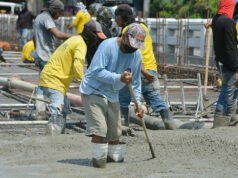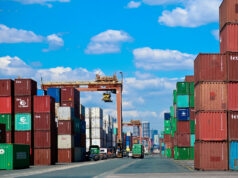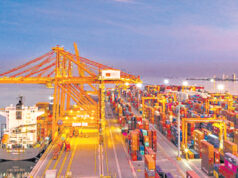Convergence of dissatisfaction
I spent a good part of Tuesday morning, about 3 hours, renewing my driving license. If memory serves me, I have not spent that much time renewing my license since three administrations ago. The fastest cycle time, if I recall correctly, was during the Arroyo administration. I was in and out of the renewal center, and with license card in hand, in less than an hour.
In fairness to the licensing center, the same one I have been going too for the past 3-4 renewals, the “delay” this time was in part to new requirements: a more comprehensive eye test, which is necessary; and, a new biometric system that took longer time encoding information as well as all capturing photographs and fingerprints.
I believe the new process is a step-up, and perhaps last Tuesday’s incident is one-off. By the next renewal, I hope things the process has been streamlined. The pluses, of course, is that the new eye testing system is far better than the previous manual testing, and that the new license is good for five years, not like the previous one that was good for only three.
Here is the rub, though. For people like me who applied for renewal just recently, the wait may have been relatively long but you go home with the new license card in hand. That, to me, is a big plus more so if you lack any other valid identification card as required by banks, governments offices, and for various public and private transactions.
But, for people who renewed their licenses in 2016 and in the early part of 2017, or those under the category of “backlog,” license cards are printed and issued to them only on Saturdays and Sundays, during office hours, and only to the first 100 applicants in the line. If you come in later than the others and get no. 101, then you would just have to come back another day.
Last Tuesday, I saw about four seniors walk in to get their license cards.
While they have renewed their licenses early on, they were made to fall in line once more primarily because of the biometrics requirements. In short, they had to repeat part of the renewal process just so they can finally get their license cards.
And this, to me, is the crux of the matter. Government processes, whether in procurement or in terms of delivering public services, should always be reliable, consistent, and predictable. What has happened, however, particularly in the case of services under the Land Transportation Office, rules and systems change almost every administration. This results in poor service and a grieving public.
Last Tuesday, the renewal center was packed, with half the crowd forced to remain standing up for hours while waiting. There were not enough chairs reserved for seniors and PWDs. In fact, a pregnant woman came and left. And worse, there was a single window for receiving applications, whether new applications or renewals. Every time a senior person arrives, everybody else gets bumped off.
And this, to me, is precisely why a lot of people, including those like me who had voted for change in May 2016, have become unhappy now with how things are. Obviously, not much has changed, and some things appear to have even worsened. This is particularly sad for people who voted the way they did in 2016 primarily because of dissatisfaction with public services.
We have had transport concerns for decades. But, at least during the Arroyo administration, license cards and license plates for cars were processed quickly, and made readily available to people who need them and have paid for them. Since the Aquino administration, however, and until now, we have had to deal with “supply” problems.
In the same manner, the maintenance issues hounding the MRT-3 since the last administration have remained unresolved. Congestion at the airports are still an issue, traffic is still a major problem, and politicking and corruption are still a part of everyday life. This has been compounded by what appears to be a growing mistrust of the police service.
It is thus unsurprising that there has been a dip in the polling numbers of the President, who may have promised too much in May 2016 but seems to have been slow in delivering on them. The concerns over alleged extrajudicial killings, unsolved murders, and violence related to the ongoing drug war appear to have had an impact on satisfaction surveys.
As Mahar Mangahas, who heads polling firm Social Weather Stations (SWS), was quoted as explaining, “All the presidents, their ratings go down. I wouldn’t say that there has to be something violent that happens, but if there’s violence then that’s the worst – like these extrajudicial killings. That (drop) probably would not be that low if not for these things.”
President Duterte’s net satisfaction rating was reported to have dropped to a “good” +48 in the Sept. 23-27 survey by SWS, from a “very good” +66. His net trust rating also reportedly fell to a “very good” +60 from an “excellent” +75 in June 2017. The noncommissioned poll reportedly used face-to-face interviews of 1,500 adults nationwide.
To me, the ratings drop is an indication of frustration – perhaps the signal of growing politically dissatisfaction particularly in urban areas over the quality of public services and concerns over police involvement in illegal activities and unexplained deaths. As such, the best way to counter the ratings drop is to address these two main issues in a more efficient and effective manner.
The worst thing the administration can do is to stick to a seemingly faltering formula. It needs a strategy change, and quickly. It shouldn’t wait for rising political dissatisfaction to converge with economic dissatisfaction. Such convergence can result in a tide of events that can spell trouble for the President as well as the country.
Consider the following: rising food, oil, and electricity prices spurred inflation in August. To date, in October, fuel and electricity prices continue to rise. The peso has also fallen, resulting in higher prices of imported goods, including food. And once the administration’s tax reform plan passes Congress, expect even higher prices for fuel, perhaps electricity, and consumer durables such as vehicles.
The possible convergence of political and economic dissatisfaction is a risk factor that must be mitigated. Otherwise, this convergence can have negative consequences. For one, it can erode popular support for the President, which can also impact on his strong support in both Houses of Congress. This can derail his legislative agenda.
Moreover, it can also result in more protest actions against government. And this tends to create the misimpression or wrong perception of growing political and social discontent, and even looming instability. This, in turn, can impact on local and foreign investments and business confidence in the economy. Jitters likewise negatively impact on financial markets.
Any perceived weakening in political support, or perception of confusion, can also be exploited as it emboldens anarchists and trouble makers with agenda. Instead of moving the country forward, those with vested interests may just drag it through the mud, in pursuit of political ends. And, rather than wait for the 2022 elections, they may choose to act irrationally.
The administration should make a thorough self-examination, an honest assessment of gains and losses, and then decide how best to pursue an agenda for the greater good. The best way to counter dissatisfaction is to improve on public services, as well as create an environment that will ensure strong economic growth for the long term.
Marvin A. Tort is a former managing editor of BusinessWorld, and a former chairman of the Philippines Press Council.



